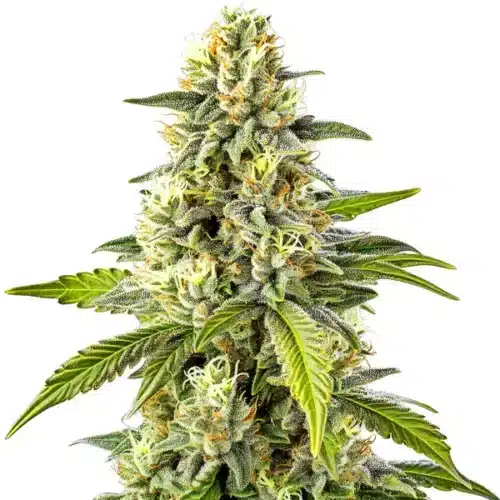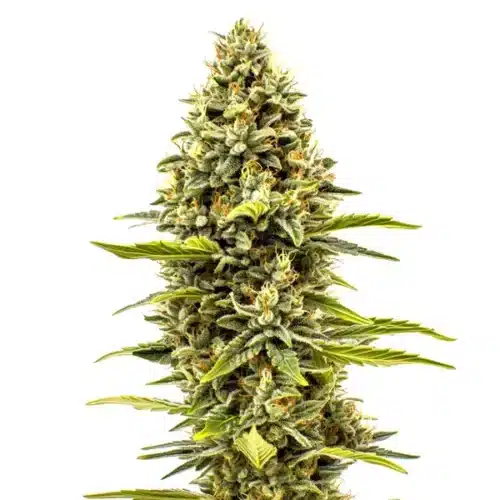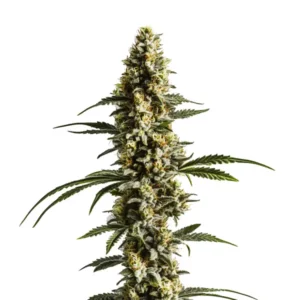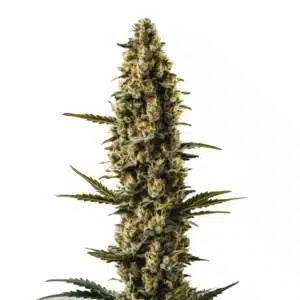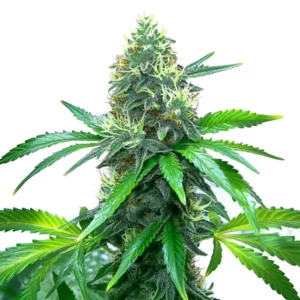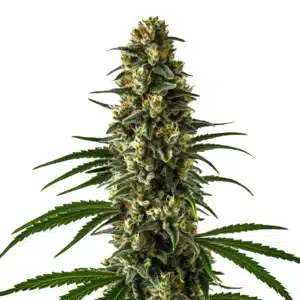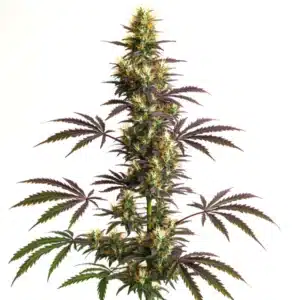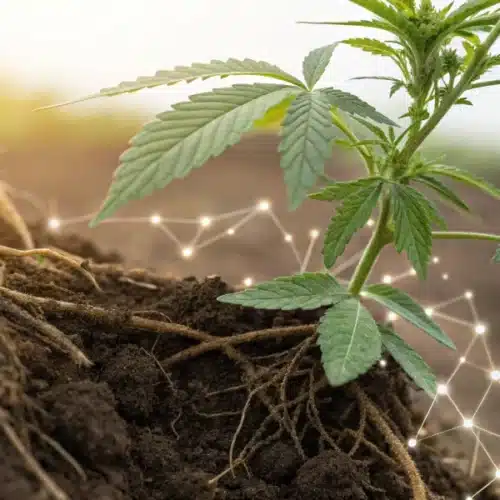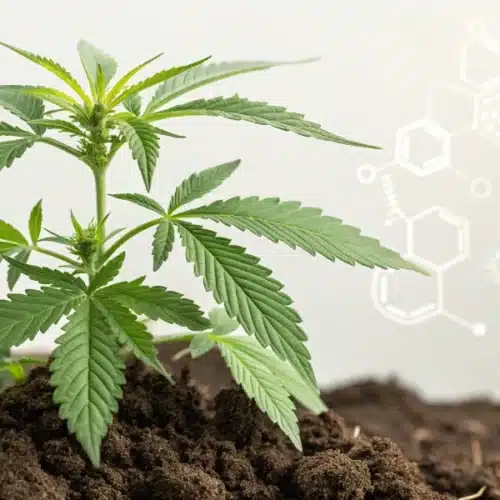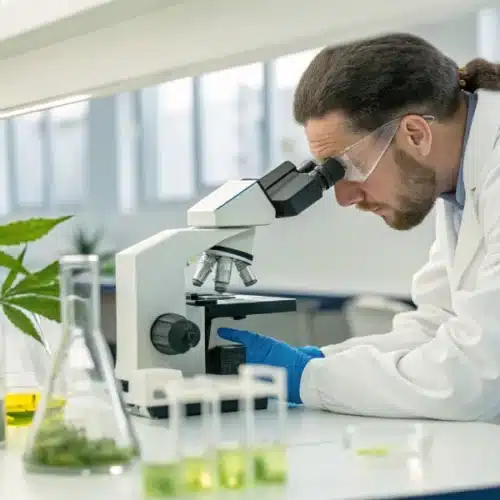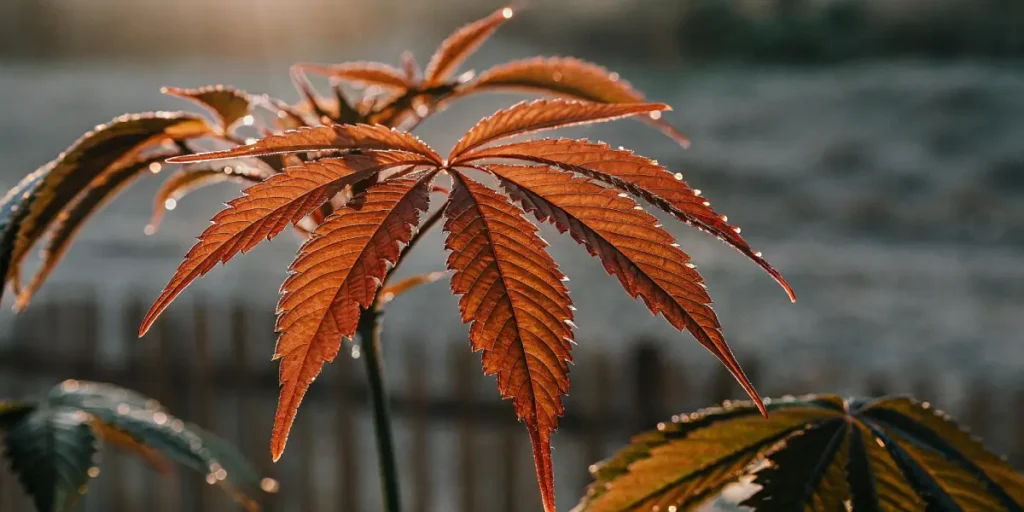
Beneficial Microbes in Cannabis Cultivation
Beneficial microbes in cannabis cultivation are like secret allies for your plants. These tiny organisms, often invisible to the naked eye, play a massive role in the health and productivity of your cannabis crop. By fostering a thriving ecosystem of beneficial bacteria and fungi, you can see your plants grow stronger and yield better results.
Soil microbes for cannabis growth are essential for breaking down organic matter and making nutrients more accessible to your plants. They work quietly beneath the surface, transforming the soil into a vibrant medium where cannabis can thrive. Whether you’re a first-time grower or a seasoned pro, tapping into this natural resource can elevate your cultivation game.
Recommended Strains
Cheese
 THC: 14% - 18%
THC: 14% - 18% Type of seed: Feminized
Type of seed: Feminized Day to flower: 8 - 10 weeks
Day to flower: 8 - 10 weeks
Cheese Auto
 THC: 10% - 15%
THC: 10% - 15% Type of seed: Autoflowering
Type of seed: Autoflowering Day to flower: 10 - 12 weeks
Day to flower: 10 - 12 weeks
Consider the impact of microbial inoculants for cannabis. These products introduce specific strains of beneficial microbes to your soil, enhancing nutrient uptake and improving plant health. With the right balance of microbes, even challenging growing conditions can become more manageable, allowing your cannabis plants to flourish.
The integration of beneficial microbes in cannabis cultivation is a natural approach that aligns with sustainable farming practices. By minimizing the need for chemical fertilizers and pesticides, growers not only support plant health but also contribute to environmental conservation. This holistic approach is rapidly gaining popularity among cannabis cultivators seeking to produce cleaner, more organic products.
As research into the benefits of beneficial microbes continues, new strains and combinations are being developed to target specific plant needs. This innovation opens up new possibilities for growers to custom-tailor their microbial inoculants, ensuring their crops receive the most effective and efficient support possible.
Beneficial Bacteria in Cannabis Farming
Beneficial bacteria in cannabis farming are nature’s helpers in creating a healthy rhizosphere. The rhizosphere is the narrow region of soil directly influenced by root secretions and associated soil microorganisms. In this area, beneficial bacteria break down organic matter, releasing nutrients that are crucial for plant growth.
These bacteria also play a role in protecting plants from harmful pathogens. By outcompeting pathogens for resources, beneficial bacteria form a natural defense line around the plant roots. This reduces the need for chemical pesticides, promoting a more organic cultivation approach.
In cannabis farming, the strategic use of beneficial bacteria can lead to a more resilient crop. They not only enhance nutrient uptake but also promote stronger root systems, which are vital for plant stability and nutrient absorption. This is particularly important in large-scale operations where plant health can directly impact yield and profitability.
Furthermore, beneficial bacteria in cannabis farming can aid in the decomposition of organic fertilizers, making nutrients more readily available to plants. This accelerates growth and can lead to earlier flowering times, allowing for more efficient harvest cycles. As cultivators continue to explore the potential of these microbes, they are finding new ways to optimize growth and maximize returns.
Real-Life Benefits of Beneficial Bacteria
Imagine you’re cultivating the popular strain, OG Kush, known for its robust growth and potent effects. By introducing beneficial bacteria into your grow medium, you can enhance nutrient absorption, leading to denser buds and increased resin production.
These bacteria also help maintain soil structure, improving aeration and water retention. This is particularly beneficial when growing strains like Blue Dream, which requires a balanced environment to reach its full potential.
Incorporating beneficial bacteria can significantly reduce the incidence of root diseases by fostering a more robust rhizosphere. This not only protects your plants but also reduces the need for interventions, such as fungicides, which can disrupt the delicate balance of soil microbes for cannabis growth.
As growers become more familiar with the real-life benefits of beneficial bacteria, they can tailor their cultivation techniques to leverage these advantages. For instance, applying microbial inoculants at specific growth stages can optimize plant health and productivity, giving cultivators a competitive edge in the market.
Promos & Deals
Fungi Role in Cannabis Cultivation
Fungi, particularly mycorrhizal fungi, are critical in cannabis cultivation. These fungi form symbiotic relationships with plant roots, extending their reach and enhancing nutrient uptake. This is especially important for nutrients like phosphorus, which is vital for flowering and fruiting.
When fungi colonize plant roots, they increase the surface area for water and nutrient absorption. This mutualistic relationship helps plants like the Girl Scout Cookies strain thrive, especially in nutrient-poor soils.
The fungi role in cannabis cultivation goes beyond nutrient uptake; they also contribute to soil health by improving its structure and fertility. Mycorrhizal fungi help bind soil particles together, reducing erosion and promoting a stable growing environment, which is crucial for long-term cultivation success.
Additionally, these fungi can enhance plant resilience to environmental stresses such as drought and salinity. By bolstering the plant’s natural defenses, fungi enable cannabis to thrive in less-than-ideal conditions, expanding the possibilities for cultivation in diverse climates and regions.
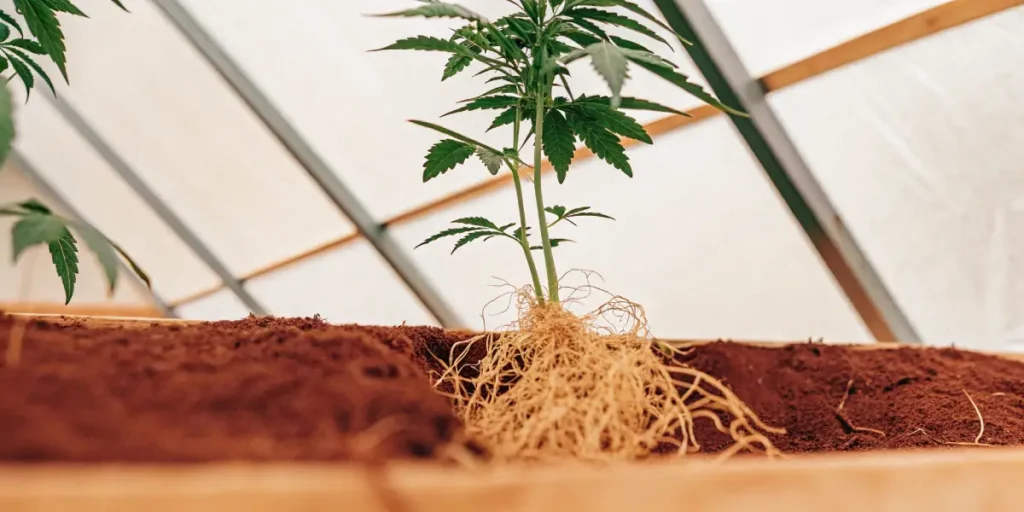
Practical Applications of Fungi in Growing
Using fungi in cannabis cultivation can be as simple as applying a mycorrhizal inoculant to your soil. This introduces beneficial fungi directly to the roots, jump-starting the symbiotic relationship. The benefits are evident in more vigorous growth and higher yields.
For growers dealing with compacted or poor-quality soil, fungi can help improve soil structure and fertility. This is crucial for strains that require rich, well-draining soils to reach their full potential.
In practical terms, mycorrhizal fungi can be integrated into various cultivation systems, from soil-based grows to hydroponics. This adaptability makes them a versatile tool for enhancing plant health and productivity across different growing methods.
Moreover, the application of fungi in cannabis cultivation aligns with sustainable agricultural practices. By reducing the reliance on synthetic fertilizers, growers can lessen their environmental footprint while still achieving impressive yields and maintaining plant health.
Practical Tips for Using Beneficial Microbes
For those new to the concept of beneficial microbes in cannabis cultivation, starting small and observing changes can be enlightening. Begin by selecting a microbial inoculant suited to your specific strain and growing conditions.
Consistency is key. Regular applications of beneficial microbes can help maintain a balanced soil ecosystem. This is especially important during the critical growth phases of your plants.
Knowing the interaction between beneficial microbes and your specific strains can lead to tailored cultivation strategies. By monitoring plant responses and adjusting microbial applications accordingly, growers can maximize the benefits of these tiny allies.
Engaging with the growing community can also provide valuable insights into the use of beneficial microbes. Sharing successes and challenges with other cultivators can accelerate learning and lead to the discovery of new techniques and products that enhance cannabis cultivation.
Choosing the Right Microbial Inoculants
When selecting microbial inoculants for cannabis, consider the specific needs of your plants. Some strains might benefit more from bacteria, while others thrive with a combination of bacteria and fungi. Experimenting with different products can help you find the perfect match for your garden.
Monitoring plant response is crucial. Look for signs of improved growth, such as larger leaves, thicker stems, and more vibrant colors. These indicate that the beneficial microbes are working effectively.
The choice of microbial inoculants for cannabis should also consider the growing environment. Factors such as soil type, pH, and climate can influence the effectiveness of different microbial formulations, making it essential to tailor your approach to your specific conditions.
Besides to selecting the right inoculants, proper application methods are vital for maximizing their benefits. Follow manufacturer guidelines for dosage and frequency to ensure the best results, and consider integrating them into your regular cultivation routine for sustained plant health and productivity.
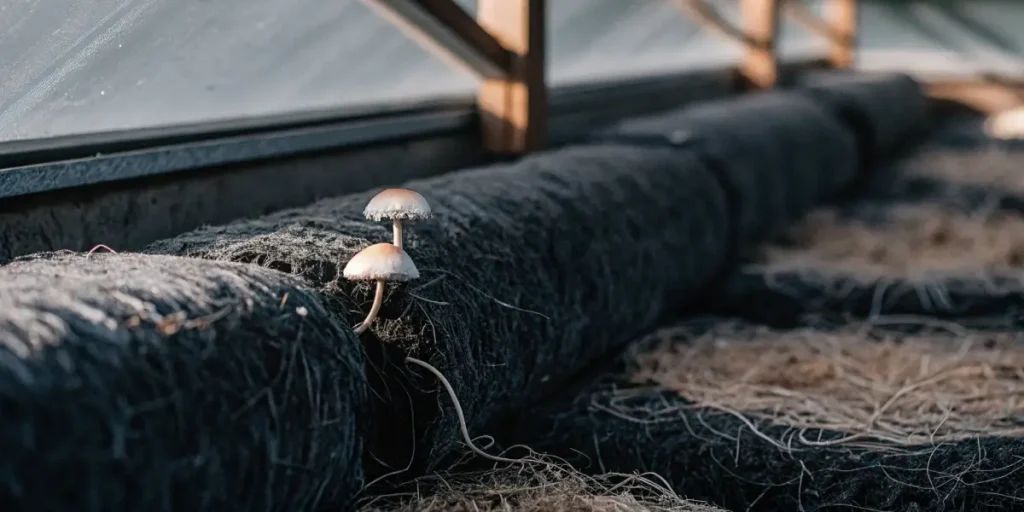
FAQs about Beneficial Microbes in Cannabis Cultivation
What are beneficial microbes in cannabis cultivation?
Beneficial microbes include bacteria and fungi that enhance the growth and health of cannabis plants. They improve nutrient availability, support root health, and protect against pathogens. By fostering a healthy microbial environment, growers can achieve more robust plants and higher yields.
These microbes work by breaking down organic materials, making nutrients more accessible to the plants. They also form symbiotic relationships with plant roots, which helps in nutrient and water uptake. Overall, they are a natural way to boost plant health and productivity.
In cannabis cultivation, beneficial microbes are integral to creating a thriving rhizosphere. This dynamic zone supports root growth and nutrient exchange, making it a focus for growers looking to optimize plant health and yield potential.
The function of beneficial microbes extends to enhancing the flavor and potency of cannabis. By promoting healthier plants, these microbes contribute to the development of complex terpene profiles and higher cannabinoid concentrations, resulting in superior quality products.
How do I introduce beneficial microbes to my cannabis plants?
Introducing beneficial microbes can be done through microbial inoculants, which are available in liquid or powder form. These products contain specific strains of bacteria and fungi that are beneficial for cannabis growth. Simply mix them with water and apply to the soil or growing medium.
For best results, follow the manufacturer’s instructions on dosage and frequency. Regular applications throughout the plant’s lifecycle can help maintain a thriving microbial community, which supports healthy plant development.
It’s important to consider the timing of microbial applications in relation to the plant’s growth cycle. Introducing microbes during early growth stages can establish a strong foundation for plant health, while continued use supports ongoing development and resilience.
As you incorporate beneficial microbes into your cultivation practices, keep track of any changes in plant performance. Documenting these observations can help refine your approach and maximize the benefits of these natural allies.
Can beneficial microbes replace fertilizers in cannabis cultivation?
While beneficial microbes significantly enhance nutrient availability, they do not entirely replace the need for fertilizers. They work best when used in conjunction with a balanced nutrient regimen. The microbes help plants utilize fertilizers more efficiently, reducing the overall need for chemical inputs.
For organic growers, beneficial microbes can significantly reduce the need for synthetic fertilizers, allowing for a more natural cultivation process. Combining organic fertilizers with beneficial microbes can lead to healthier plants and more flavorful yields.
Incorporating beneficial microbes into your nutrient management plan can lead to more sustainable cannabis cultivation. By reducing the reliance on chemical fertilizers, growers can decrease their environmental impact while maintaining high production standards.
Knowing the complementary roles of beneficial microbes and fertilizers can lead to a more refined approach to nutrient management. By leveraging the strengths of both, cultivators can achieve optimal plant performance and quality.
Are there any risks associated with using beneficial microbes?
Generally, using beneficial microbes is safe and offers many advantages for plants. However, it’s essential to choose high-quality products and follow recommended usage guidelines. Overapplication can sometimes lead to nutrient imbalances or unintended microbial competition.
To minimize risks, start with smaller applications and gradually increase as you monitor plant response. It’s also beneficial to maintain a balanced growing environment to support the healthy functioning of added microbes.
While beneficial microbes are advantageous, it’s crucial to ensure they are compatible with your existing cultivation practices. Introducing new microbial strains should be done carefully to avoid disrupting the established soil ecosystem.
Regular monitoring and soil testing can help identify any potential issues early, allowing for adjustments to your microbial application strategy. This proactive approach ensures that the benefits of beneficial microbes are maximized while minimizing any risks.
How do beneficial microbes affect the quality of cannabis?
Beneficial microbes can enhance the quality of cannabis by improving nutrient uptake and plant health. Healthier plants produce more potent cannabinoids and richer terpene profiles, resulting in higher quality buds. This is particularly noticeable in strains with complex flavor profiles.
By promoting a balanced ecosystem, beneficial microbes can also lead to more consistent growth and flowering. This consistency contributes to better overall quality and uniformity in your harvest, making for a more satisfying cultivation experience.
The impact of beneficial microbes on cannabis quality extends to the overall aesthetic of the plant. Healthier plants exhibit more vibrant colors and more robust structures, which can enhance the market appeal of your final product.
Moreover, the use of beneficial microbes aligns with consumer demand for cleaner, more organic cannabis. By reducing the need for synthetic inputs, growers can offer products that meet the increasing preference for natural cultivation methods.

